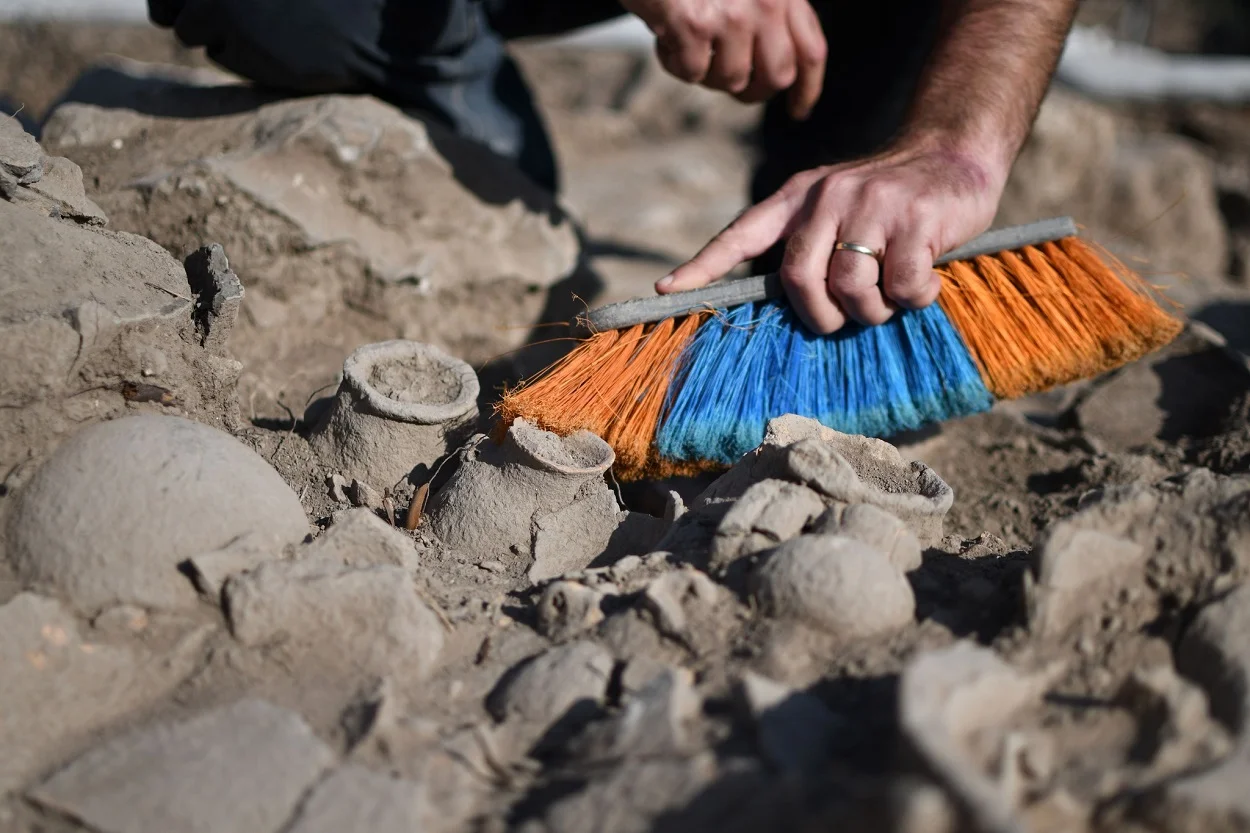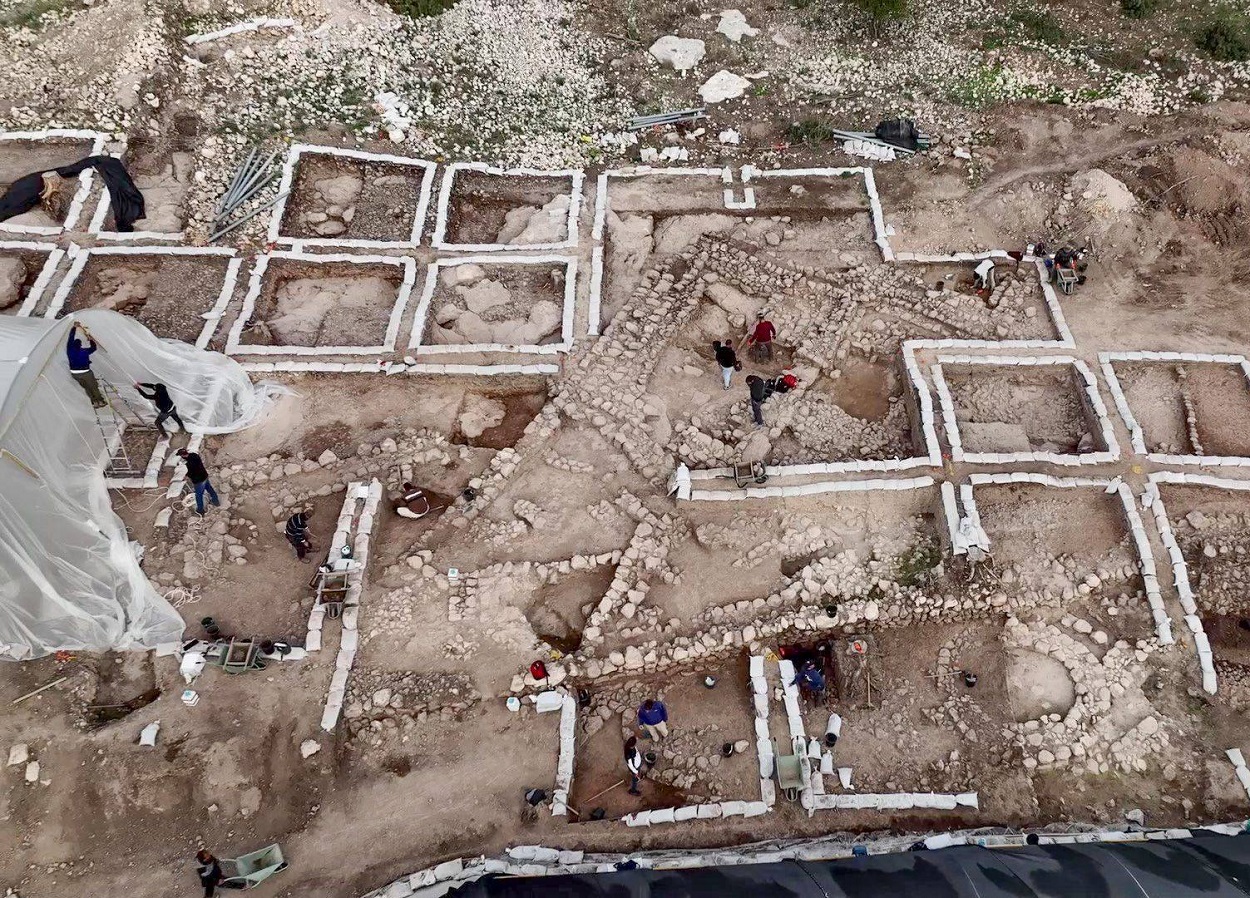Archaeologists from the Israel Antiquities Authority (IAA) have uncovered a 5,000-year-old settlement during excavations for the development of an industrial zone near Beit Shemesh, Israel.
According to a press statement issued by the IAA, archaeologists found traces of a large public building that likely served a ritual function in a wider community settlement.
Within the structure’s interior rooms, excavations revealed 40 intact vessels in situ, that date from the Early Bronze Age IB (late 4th millennium BC).
The Early Bronze Age marked a period of profound transformation in ancient Israel, with substantial population growth and the emergence of complex social hierarchies and political systems.
By this era’s peak, urbanisation had accelerated, evidenced by fortified cities, public buildings, organised industries, and active trade with regions such as Egypt, Syria, Anatolia, and Mesopotamia.

“These pots and juglets were placed here just before the site was permanently abandoned. Signs of burning and overlapping vessels indicate that future analysis of their contents could reveal whether they held oil, water, grains, or exotic oils,” said the IAA.
Due to the size of the structure and architectural elements, archaeologists suggest that the structure may have been a public building or temple, one of the oldest known examples to date found in the Judean Lowlands.
Near the structure, a complex of large standing stones arranged in rows was also discovered. “The standing stones were erected even before this enclosed public building was erected. Their presence promises to be instructive of the socio-political process involved in the founding of the cultic service in Hurvat Husham,” said the IAA.
The vessels and further details of the latest excavation season will be presented at the 17th “Discoveries in the Archaeology of Jerusalem and its Surroundings” conference.
Header Image Credit : IAA
Sources : IAA







